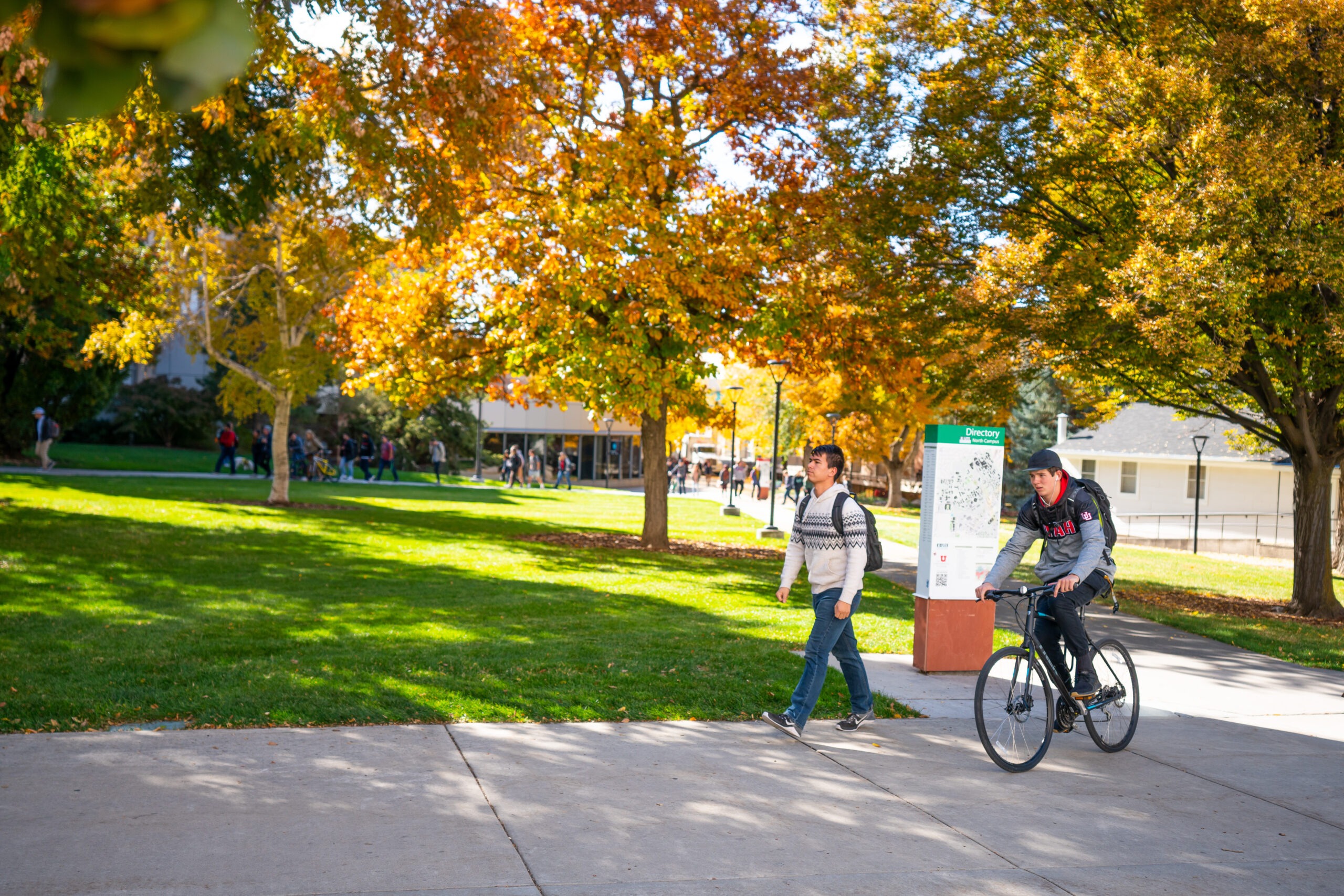
Students, advisors and faculty gathered virtually on April 10 for their Impact 2030 strategy session, facilitated by Professor Claudia Geist from the Sociology Department and Portia Anderson, College of Architecture and Planning associate dean for equity, diversity, inclusion and belonging.
Geist and Anderson opened the session with a discussion of the fundamental mission and values that guide the University of Utah, including student success, scholarship and inclusion. Then, the facilitators asked the group to describe characteristics which set the U apart. Answers included: entrepreneurship, care for our families and communities, our state and our country. Next, Anderson and Geist asked the graduate students what might be missing. Tolerance of other view and perspectives, campus culture and embracing diversity were among the most common answers.
President Taylor Randall has added an institutional goal of advancing a new national higher education model for delivering societal impact. The facilitators asked the group to review a list of tactics that work toward that goal before suggesting additional steps for achieving societal impact. Suggestions included:
- Student leadership and development
- Student activism
- Outreach to rural Utah
- Sustainability, clean air and climate change
- Public trust
- Inclusivity and accessibility
- Internship opportunities
Brief summaries of the questions discussed in breakout sessions are below. (Anderson facilitated session 1 and Geist facilitated session 2.)
Session 1: Undergraduate Students
Challenges—Cost was the most frequently mentioned challenge for graduate students. More specifically, cost of affordable housing, cost of living, caring for aging parents and the need to work multiple jobs. Others mentioned complicated transfer pathways and the complexities of life as a non-traditional student.
Differentiators—Quality of life and access to outdoor recreation are the primary differentiators for the University of Utah. Respondents also mentioned relative affordability and the academic quality of U programs.
Enhancing Recruitment and Student Success—Participants mentioned increased support for transportation, student advisors and better and more enhanced marketing of the U. Students also mentioned enhanced resources for student centers, including: the American Indian Resource Center, Black Cultural Center, and Dream Center. Others suggested more support for the laptop checkout program at Marriott Library. Participants suggested boosting outreach in Utah’s high schools and building additional internship opportunities and Career Services support to help students find meaningful work after graduation.
Session 2: Graduate Students
Challenges—Graduate students mentioned affordability; the complexity of having families, caring for aging parents as well as children; and the extra layers of paperwork and regulation for international students. Falling behind financial is a primary barrier to academic progress.
Career Opportunities—Students and their advisors said while Career Services staff are friendly, they are largely focused on the workforce needs of undergraduate students. Embedding and engaging them with graduate programs, and helping students connect with industry partners would enhance job prospects after graduate school.
Enhancing Grad Student Success—Graduate students should be given the same attention as undergraduate students, including integrating systems for all students (not undergraduates first and graduates as an afterthought), breaking down internal silos and creating centralized processes to ease applications, progress and job searches. Others suggested implementing plateau tuition— https://ushe.edu/plateau-tuition-how-can-it-help-students/.
